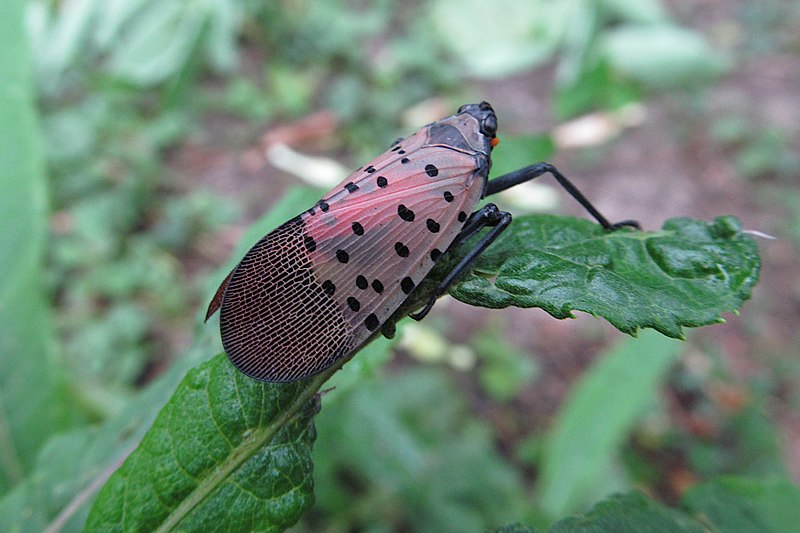Editorial | Kill them all: Spotted lanternflies are invasive


A spotted lanternfly.
Local agriculture agencies across the Northeast and Midwest have started “If you see it, kill it” campaigns against the invasive spotted lanternfly, and now it’s time for The Pitt News to run our own.
Despite their recent rise to fame, spotted lanternflies were first detected in Pennsylvania in 2014. Although they have a stunning red body and cool spotted wings, the spotted lanternfly is more destructive than beautiful. In August, Senator Chuck Schumer of New York called on the federal government to contribute $22 million more to a U.S. Department of Agriculture program that tackles invasive species.
Schumer specifically pointed to the spotted lanternfly, saying the bug needed to be “[stomped] out” before it becomes an “unmanageable swarm” that hurts farmers and local businesses.
But what are these creatures that everyone is trying to kill?
Native to China, the spotted lanternfly is neither a fly or a moth, but a “planthopper.” These bugs feed on various types of plants and trees, creating a stressor that makes them more susceptible to disease that could lead to death. When spotted lanternflies feed, they excrete “honeydew” which encourages the growth of black mold that causes damage to plants.
Although the bugs are not harmful to humans or animals, they are incredibly destructive to the environment and local economies. Economists at Penn State estimate that spotted lanternflies could cause up to $324 million in annual damages in Pennsylvania alone.
Part of the issue is that the U.S. is not home to any natural predators of the spotted lanternflies.
However, the good news is that social media has helped spread the word about the catastrophic impact these bugs have in their invaded territory. The crushed bodies of lanternflies scatter the sidewalks leading up toward upper campus, showing just how invasive they are. Many people on and around Pitt’s campus are doing the necessary work, one bug at a time, but as they expand their reach, killing them is more important than ever.
The unfortunate reality is that these pests are likely here to stay. “It’s a pest we’ll learn to live with,” says Brian Eshenaur, who works with the New York State Integrated Pest Management Program.
Spotted lanternflies may become the new stink bug — an invasive menace that was also first noticed in Pennsylvania. We all have a part to play in the fight to keep the spotted lanternfly population in check.
Recent Posts
Review | Tyler, the Creator and friends come to Pittsburgh on the ‘Chromakopia’ tour
With the release of his eighth studio album, “Chromakopia,” decorated rapper, songwriter and producer Tyler,…
A Good Hill to Die On // The motivation we all need
In this post of “A Good Hill to Die On,” staff writer Sierra O’Neil discusses…
Who Asked? // Is it really the damn phones?
This installment of Who Asked? by staff writer Brynn Murawski describes her brief journey limiting…
Students are ‘upset, but not surprised’ over denial of gender affirming care at UPMC CHP
Pitt students and LGBTQIA+ members express their concerns about the recent denial of gender affirming…
Take Madness Final Four | Battle of Pennsylvania, 412 and Just Outside of Philly clash
Welcome to the Final Four of Take Madness! We are down to four talented writers,…
Column | Best Sports Environments in Pittsburgh
Pittsburgh is undoubtedly one of the best sports cities in America. A deeply passionate fanbase…

